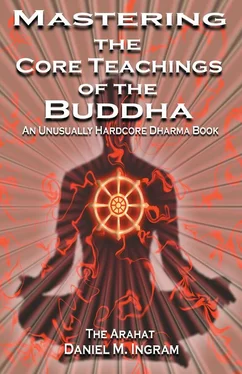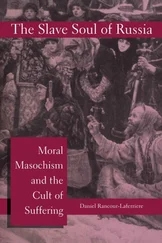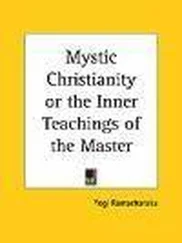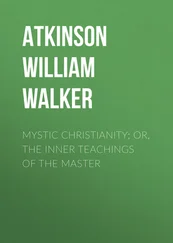Daniel Ingram - Mastering the Core Teachings of Buddha - An Unusually Hardcore Dharma Book
Здесь есть возможность читать онлайн «Daniel Ingram - Mastering the Core Teachings of Buddha - An Unusually Hardcore Dharma Book» весь текст электронной книги совершенно бесплатно (целиком полную версию без сокращений). В некоторых случаях можно слушать аудио, скачать через торрент в формате fb2 и присутствует краткое содержание. Год выпуска: 2009, ISBN: 2009, Издательство: Aeon Books, Жанр: Старинная литература, на русском языке. Описание произведения, (предисловие) а так же отзывы посетителей доступны на портале библиотеки ЛибКат.
- Название:Mastering the Core Teachings of Buddha - An Unusually Hardcore Dharma Book
- Автор:
- Издательство:Aeon Books
- Жанр:
- Год:2009
- ISBN:9781904658405
- Рейтинг книги:5 / 5. Голосов: 1
-
Избранное:Добавить в избранное
- Отзывы:
-
Ваша оценка:
- 100
- 1
- 2
- 3
- 4
- 5
Mastering the Core Teachings of Buddha - An Unusually Hardcore Dharma Book: краткое содержание, описание и аннотация
Предлагаем к чтению аннотацию, описание, краткое содержание или предисловие (зависит от того, что написал сам автор книги «Mastering the Core Teachings of Buddha - An Unusually Hardcore Dharma Book»). Если вы не нашли необходимую информацию о книге — напишите в комментариях, мы постараемся отыскать её.
Mastering the Core Teachings of Buddha - An Unusually Hardcore Dharma Book — читать онлайн бесплатно полную книгу (весь текст) целиком
Ниже представлен текст книги, разбитый по страницам. Система сохранения места последней прочитанной страницы, позволяет с удобством читать онлайн бесплатно книгу «Mastering the Core Teachings of Buddha - An Unusually Hardcore Dharma Book», без необходимости каждый раз заново искать на чём Вы остановились. Поставьте закладку, и сможете в любой момент перейти на страницу, на которой закончили чтение.
Интервал:
Закладка:
The practical reason for including Part II at all is that what often happens between trying to apply the basics of technical meditation discussed in Part I and the successful entry into real meditation territory discussed in Part III is that we run into the mainstream culture of Western Buddhism and the communities that develop around it. We need support, friends who are into what we are into, good teachers and places to practice. We wish to be in the company of fellow adventurers rather than lone wanderers in strange lands. Unfortunately, much of what we find is not particularly conducive to adventure and deep exploration at all.
Thus, as one small dissenting voice against the tide, I have included Part II to help those who want to go much deeper than most of those around them and avoid the numerous cultural sidetracks and
disempowering voices that will keep them from their goals. It is as much a laundry list of my pet peeves as it is anything else, but I am happy to own my neuroses and make them overt. While I may be fooling myself, I think this section, while a bit harsh and probably disrespectful, is likely to be helpful to someone who also wishes to go against the grain and become an actual meditation master.
The real dangers that come from using a cutting tone are that it will alienate both readers for whom such a tone is simply not helpful and those who could really benefit from such a tone but do not want to admit this. Worse, it may cause others to agree too strongly, thinking,
Introduction to Parts II & III
“Oh, yes, even though that Daniel fellow sometimes writes like a raving lunatic, he and I are really on the same side. We know what is going on.
Those over there are the ones who really need to hear this.”
We all need to hear the points made in this book, myself included, though not necessarily in the style presented here. The ideals and standards presented in this book are very high so that they will be able to be applied universally. Further, the numerous traps and pitfalls presented in this book are also so common that all of us need to be wary, reflecting regularly and honestly on how we have fallen into them once more.
There are quite a number of very readable, helpful and friendly dharma books out there, e.g. Jack Kornfield’s encyclopedic masterwork, A Path with Heart, many of which are loaded with brilliant statements that should basically shock and confound the reader, hitting at the very core of their sense of identity with the deadly accuracy of a Master of Zen Archery. However, as they have been written in a style that is so completely accessible, these statements have nearly the opposite effect, creating a mushy comfort in the reader with statements that should have stopped them in their proverbial tracks and provoked deep inquiry.
I have grown tired of people routinely quoting profound dharma statements from such works as if this represents their understanding when they have no idea what they mean. They seem to derive some false comfort from being able to parrot the masters. While I can understand the appeal of behaving in such ways, as I have done so myself on numerous occasions, I will do my best to keep the second two parts of this book from contributing to this phenomena. Thus, I have intentionally written some sections of Parts II and III in a style that is designed to sound combative and abrasive. Also, I must admit that it was fun to write that way.
It should be noted that if you got through Part I (which I tried to make very “accessible”) without being stunned at the staggering profundity of the statements made on nearly every page, then you either have no need to read this book or you fell into the trap I just mentioned above. I think that most spiritual practitioners could and should become very much more comfortable admitting what they don’t know and 89
Introduction to Parts II & III
seeking clarification. The times when I myself have failed to do so have been much to my detriment.
In these next two parts, I will often mention very specific high states and attainments for the purpose of attempting in some small way to refocus Buddhism on those things that go far beyond philosophy, psychology, and dogmatic religion. It is full enlightenment that finally makes the difference and was, according to the Buddha himself, the whole reason for all of this. Unfortunately, even fairly rational adults can suddenly lose the ability to stay in touch with ordinary reality when such language is used, and I will do my best to try to counteract this and bring things back down to Earth whenever possible.
It has become almost taboo to mention actual attainment or mastery of this stuff among many meditation communities, and this is grossly unfortunate, which is to say it is completely ridiculous and frighteningly ironic. Some reasons for this will be touched on occasionally, as well as some of what might be able to be done about this. However, if we are to have a clear standard for whether or not these techniques and teachings are working for us, it is vital that we have a thorough knowledge of what is possible and even expected of those who really practice well. That is the primary reason for Part III. Remember, you are reading a book called Mastering the Core Teachings of the Buddha. It has been written on the assumption that its readers actually want to do this.
That said, there will probably be readers who will think that most of what is written in Part III, which details the stages of enlightenment, the high concentration attainments, and even more unusual territory, is pure fantasy, myth, dogma and nonsense. I have little to say to these readers except that this book is obviously not written for them.
I hope that you will realize the difficulties inherent in language, concepts, doctrines, and maps of spiritual terrain. They are particularly clumsy tools even when used to their fullest potential, and this is unlikely to have happened here. Despite the fact that I will often use a tone implying certainty, it should be said that nothing whatsoever that I have written here is absolutely true. Language at its best is a useful tool, though by its very nature it artificially divides, reduces and over-simplifies. Hopefully, one will concern oneself with what is pragmatic rather than what is absolutely correct from some arbitrary point of view.
90
Introduction to Parts II & III
The crucial thing is practice and direct experience for one’s self. Once you understand for yourself, you will be able to laugh knowingly at my efforts.
91
13.BUDDHISM VS. THE BUDDHA *
One of my teachers once commented, “Buddhism and the
teachings of the Buddha have been at odds for 2,500 years!” These are cynical but appropriate words. What the Buddha taught was really extremely simple and, as a practice, particularly unglamorous and generally quite difficult though manageable. If one has a chance to read the original texts, one sees again and again that what the Buddha taught was generally practical and as non-dogmatic as could be expected. He basically said, “Do these very specific things, and these specific results will happen.” He had little use for ritual, ceremony or philosophy that was not for some practical purpose.
Now, it is true that things did get a bit more complex and religious in the later years of his teaching as The Vinaya, or code of conduct for monks, was established. The Buddha said that the added rules and regulations were a response to the increased quantity of low-quality students with whom he had to work in the later years of his life and the problems inherent in running a large organization. After the Buddha died, however, the process of turning the teachings of the Buddha from a practical path for awakening into a number of ritualistic religions reached new extremes of dogma and division. It is also true, however, that many worthwhile and practical variations on the fundamental teachings and techniques have been added that have provided great benefit to many of those who actually followed them rather than just talked about them.
Читать дальшеИнтервал:
Закладка:
Похожие книги на «Mastering the Core Teachings of Buddha - An Unusually Hardcore Dharma Book»
Представляем Вашему вниманию похожие книги на «Mastering the Core Teachings of Buddha - An Unusually Hardcore Dharma Book» списком для выбора. Мы отобрали схожую по названию и смыслу литературу в надежде предоставить читателям больше вариантов отыскать новые, интересные, ещё непрочитанные произведения.
Обсуждение, отзывы о книге «Mastering the Core Teachings of Buddha - An Unusually Hardcore Dharma Book» и просто собственные мнения читателей. Оставьте ваши комментарии, напишите, что Вы думаете о произведении, его смысле или главных героях. Укажите что конкретно понравилось, а что нет, и почему Вы так считаете.












